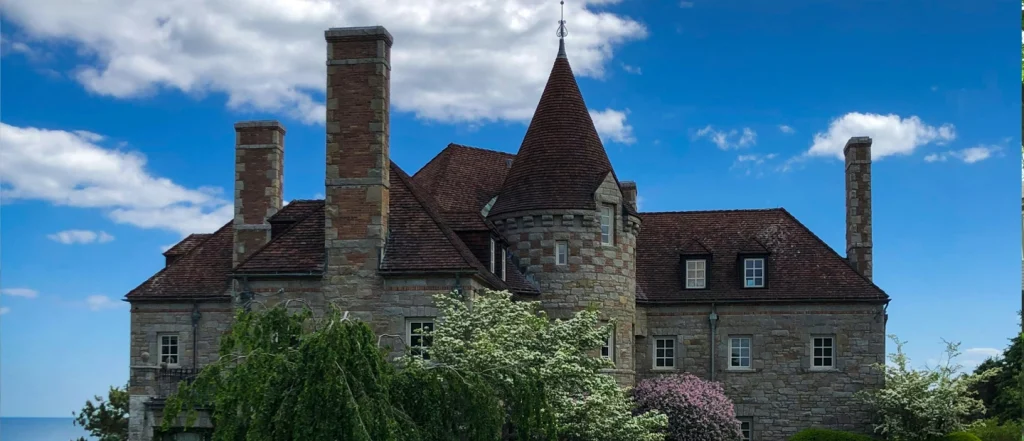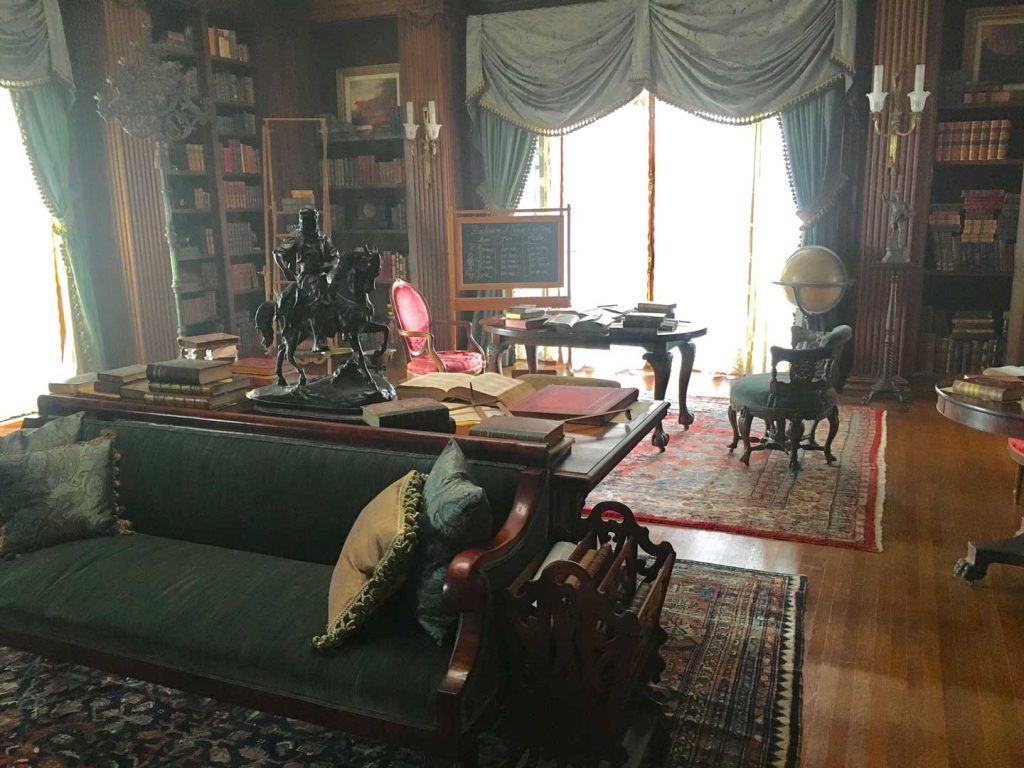
Rebecca Nurse Homestead
The Rebecca Nurse Homestead is a well‐preserved 17th-century colonial farmhouse where Rebecca Nurse, one of the most notable victims of the 1692 Salem witch trials, lived and was tried for witchcraft before her execution, offering critical insights into early colonial architecture and social history in Salem Village (now Danvers). The 1692 Cape-style timber-frame home features original hand-hewn beams, period clapboard siding, and multiple subsequent additions that chronicle changing construction techniques over nearly four centuries :contentReference[oaicite:0]{index=0}.

Phone: (978) 777-1666
General Israel Putnam House
Built circa 1648, the Gen. Israel Putnam House is one of the earliest surviving First Period structures in Massachusetts and the birthplace of Revolutionary War hero Major General Israel Putnam. Its irregular 2½-story frame combines original First Period timber framing with later gambrel and gable roof additions, showcasing adaptive reuse and preservation challenges in early American architecture :contentReference[oaicite:1]{index=1}.

Phone: (978) 777-1666
Peabody Institute Library
Designed by Little & Browne and completed in 1891, the Peabody Institute Library is a fine example of Classical Revival architecture executed in warm brick and limestone trim, with a symmetrical façade and Ionic columns framing the entrance. The structure replaced an earlier Gothic Revival building after a devastating fire in 1890 and continues to serve as Danvers’s public library, embodying late 19th-century library design principles :contentReference[oaicite:2]{index=2}.

Phone: (978) 774-5721
Danvers Town Hall
Constructed in 1892, Danvers Town Hall features Richardsonian Romanesque influences, including massive rough-cut granite walls, round-arched entrances, and a distinctive clock tower that anchors the civic center at 1 Sylvan Street. The building has undergone sensitive restoration to preserve its masonry envelope and ornate interior plasterwork while accommodating modern municipal functions :contentReference[oaicite:3]{index=3}.

Phone: (978) 777-0001
Danvers State Hospital Water Tower
Part of the 1874 Kirkbride complex designed by Nathaniel J. Bradlee, the Danvers State Hospital water tower is an imposing tall brick structure with granite trim and Gothic-inspired detailing, reflecting 19th-century institutional design aimed at self-sufficiency. Despite the hospital’s demolition, the restored tower stands as a landmark of Victorian asylum architecture and adaptive reuse :contentReference[oaicite:4]{index=4}.

Phone: N/A
Proctor School
Completed in 1894 and designed by Perry, Shaw & Hepburn, the Proctor School is a large Colonial Revival brick building with a hip roof, symmetrical facades, and classical detailing, originally serving as Danvers’s primary grammar school. Its robust masonry construction and preserved historic windows make it a case study in late 19th-century educational facility design and exterior envelope conservation :contentReference[oaicite:5]{index=5}.

Phone: (978) 777-8903
Salem Village Historic District
Designated in 1975, the Salem Village Historic District preserves an irregular cluster of Colonial, Federal, and Greek Revival residences along Centre, Hobart, Ingersoll, and Collins Streets – the heart of 17th-century Salem Village. The district’s regulations safeguard exterior architectural features, ensuring continuity of historic streetscapes linked to the 1692 witch trials :contentReference[oaicite:6]{index=6}.

Phone: N/A
High Street Cemetery
Enclosed by an early 19th-century mortared stone wall and wrought-iron gate dated 1843, High Street Cemetery contains graves of Revolutionary War veterans and was added to the National Register in 2003, highlighting funerary art and masonry craftsmanship of the period. Its preservation requires ongoing masonry restoration and landscape management :contentReference[oaicite:7]{index=7}.

Phone: N/A
Derby Summer House
Also known as the McIntire Tea-house, this 1793 Federal-style ornamental pavilion by Samuel McIntire was moved in 1901 to Glen Magna Farms. Its finely carved Ionic pilasters, swags, and wooden statuary require expert conservation of early American sculpture and timber elements :contentReference[oaicite:8]{index=8}.

Phone: (978) 777-1666
Proctor’s Ledge Memorial
Marking the site where the first accused witches were held before trial, Proctor’s Ledge Memorial features engraved granite panels and robust stone paving set within a memorial plaza, reflecting modern techniques in outdoor memorial masonry and landscape integration. It provides interpretive context for the 1692 witchcraft trials :contentReference[oaicite:9]{index=9}.

Phone: N/A
Glen Magna Farms
Established during the War of 1812 and expanded in 1893 by Little, Browne & Moore, Glen Magna Farms is a grand country estate featuring an 11-acre formal garden, carriage house, and a 19th-century mansion showcasing Colonial Revival and Beaux-Arts influences. Preservation efforts focus on stone terraces, pergolas, and brick garden walls :contentReference[oaicite:10]{index=10}.

Phone: (978) 777-1666
Endicott Park
Once part of the Endicott Estate, this 81-acre public park features original landscaping by Herbert Browne, rustic stone walls, and a carillon tower, illustrating early 20th-century estate grounds now maintained for passive recreation and historic preservation. Restoration work emphasizes stone masonry, ironwork, and historic plantings :contentReference[oaicite:11]{index=11}.

Phone: (978) 774-2272
Endicott College Great Hall
Great Hall, completed in 1939, is a Collegiate Gothic landmark on the Endicott College campus with pointed arch windows, buttresses, and a slate roof. Its masonry façades and stained-glass windows exemplify 20th-century academic architecture and ongoing envelope maintenance :contentReference[oaicite:12]{index=12}.

Phone: (978) 236-2200
St. Joseph’s Chapel, Endicott College
Dedicated in 1960, St. Joseph’s Chapel is a Modernist brick structure with stained-glass panels and minimalist detailing, contrasting with Great Hall’s Gothic Revival. The chapel’s clean masonry lines, copper roofing, and engineered glazing offer a study in mid-century religious architecture :contentReference[oaicite:13]{index=13}.

Phone: (978) 236-2200
Wadsworth School
The Wadsworth School, built in 1897, is a distinguished Colonial Revival schoolhouse designed by William H. Pearce, featuring red brick walls, pedimented entrances, and stone sills. Its symmetrical plan and masonry craftsmanship exemplify turn-of-the-century educational architecture, now adapted for community use :contentReference[oaicite:14]{index=14}.

Phone: N/A
Judge Samuel Holten House
The Judge Samuel Holten House, dating to 1692 and later home to Samuel Holten—Continental Congress delegate and signer of the Articles of Confederation—blends early colonial timber framing with 18th-century additions, highlighting layered historic fabric and complex preservation needs :contentReference[oaicite:15]{index=15}.

Phone: N/A
Ingersoll’s Ordinary (1670)
Constructed around 1670, Ingersoll’s Ordinary is one of Danvers’s oldest surviving tavern structures, featuring post-and-beam framing, original wide-plank floors, and a central chimney hearth. It offers vital lessons in First Period construction and adaptive reuse for commercial renovation :contentReference[oaicite:16]{index=16}.

Phone: N/A
Endicott Pear Tree
Believed to have been planted in the early 17th century, the Endicott Pear Tree in Endicott Park is perhaps the oldest living fruit tree in North America, with massive trunk girth and historic grafting points that require arboricultural and root-zone protection. Its preservation underscores the intersection of landscape architecture and historic resource management :contentReference[oaicite:17]{index=17}.

Phone: (978) 774-2272
Danvers State Hospital Historic District
Listed on the National Register in 1984, the Danvers State Hospital Historic District encompassed 40 buildings arranged in a Kirkbride plan, constructed of brick and granite with Victorian Gothic detailing. Though mostly demolished, remaining structures like the water tower and nurses’ homes illustrate institutional design and rehabilitation of large-scale campus settings.

Phone: N/A
River Street Historic District
The River Street Historic District features mid-19th- to early 20th-century residential and commercial brick and wood-frame buildings along River Street, with Italianate brackets, Queen Anne turrets, and Colonial Revival porches. Preservation guidelines protect facades, masonry, and cornice details that define Danvers’s commercial core :contentReference[oaicite:19]{index=19}.

Phone: N/A






